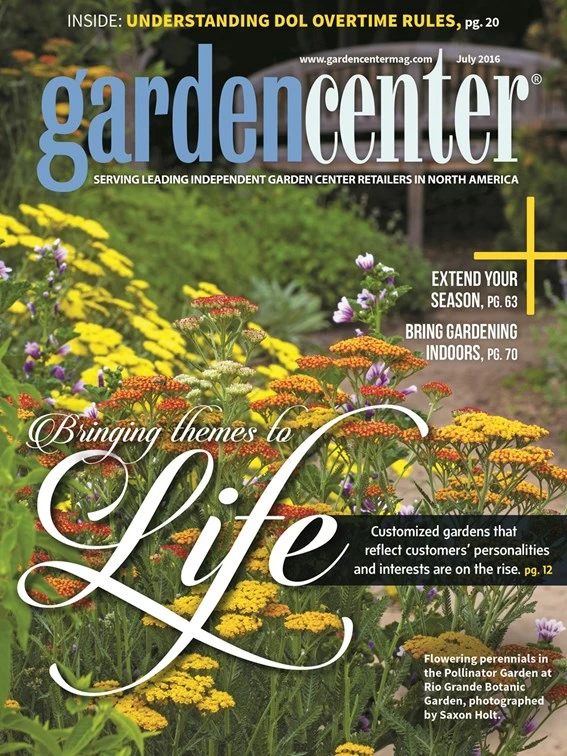
Industry expert and author Ernest Wertheim, who probably needs no introduction here, once told me to be wary when people call something a trend. Plants, décor, gardening methods and retail strategies go in and out of popularity, and there are very few truly new things introduced. “Trends” are often just different takes on what’s been done before.
I thought about his advice when reflecting on the articles throughout this issue. Jolene Hansen, a frequent contributor to this magazine, spoke to one garden center for her article, “Creative community connections,” that is using messaging from the Victory Gardens of WWII in its marketing. You can read more about how the IGC tied this in on page 76, but it prompted me to investigate Victory Gardens a bit more. The U.S. government asked citizens to build these gardens during both WWI and WWII to help the war effort and prevent a food shortage. They suggested easy-to-grow plants like Swiss chard to promote successful harvests. At that time, more people were living in cities. According to The National WWII Museum website, that meant that people grew whatever they could wherever they could — apartment dwellers planted edibles in window boxes and residents of buildings all took care of produce gardens they grew on rooftops together. Herb and vegetable gardens were planted in public parks, as well.
Sounds a lot like “green roofs” and “container gardening” to me. The museum estimates that there were 20 million Victory Gardens. Though I’m not sure of the accuracy of that figure, the point is, when people were asked to contribute to the war effort, they came through. Space wasn’t a limitation to gardening. As we all know, growing your own food during that time wasn’t a privilege or something you did if you were concerned about food sources and production practices. It was a necessity. Gardening, passed down through generations, wasn’t a hobby; it was in our blood. How to grow vegetables was common knowledge, and people didn’t need directions. On page 70, indoor lighting companies talk about how consumers’ desires to grow their own food is not a trend or a fad, it’s now a way of life and gets back to our gardening roots. However, there’s new technology. The companies hope to encourage gardeners not to just start plants inside before spring, but to grow food all year.
In speaking of technology, there is a wealth of information about gardening on the internet for people who didn’t grow up digging in the dirt. But the sources are not always sound, and sometimes, it’s too much information. There’s a paradox: although there’s more information available online, younger generations with no experience need and want direct, in-person guidance.
That’s where garden centers come in. Promotional posters with simplified messages encouraged citizens to grow Victory Gardens. Garden centers, using new technology like websites and social media, and good old fashioned customer service, can educate their customers about gardening, provide easier-to-digest information and suggested, curated plants.
Michelle Simakis msimakis@gie.net
 | The Garden Center Conference & Expo, presented by Garden Center magazine, is the leading event where garden retailers come together to learn from each other, get inspired and move the industry forward. Be sure to register by April 17 to get the lowest rates for the 2025 show in Kansas City, Missouri, Aug. 5-7.
|

Explore the July 2016 Issue
Check out more from this issue and find your next story to read.
Latest from Garden Center
- Boxed in: 2025 Axiom Gardening Outlook Study explores big box vs IGCs
- The Growth Industry Episode 3: Across the Pond with Neville Stein
- Trends: Proven Winners 2025 perennial survey shows strong demand
- Online registration opens for the 2025 Farwest Show
- Sustainabloom launches Wholesale Nickel Program to support floriculture sustainability
- Society of American Florists accepting entries for 2025 Marketer of the Year Contest
- American Horticultural Society welcomes five new board members
- Color Orchids acquires Floricultura Pacific, becoming largest orchid supplier in U.S.






